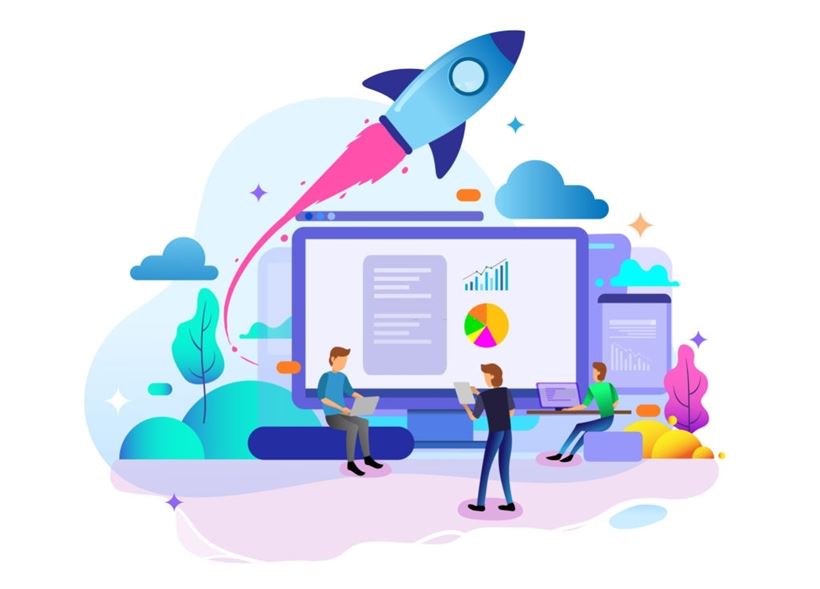IT Risk Mitigation – How To Do It Properly?
During software engineering development, have you started considering risk management as a long-term way of optimization? I think you have already experienced this, but on a smaller scale which is testing. But sometimes, only testing seems to be not strong enough for us to rely on all the time, as stated on Statista “Cyber incidents such as cyber crime, data breaches or IT failures posed a threat to global businesses in 2020”. So, how can we take control of risk factors?
Let’s find out with Savvycom on an effective strategy for dealing with this side of software engineering: IT Risk Mitigation.
1. The 05 Basic Steps of IT Risk Mitigation

“Information technology risk, IT risk, IT-related risk, or cyber risk is any risk related to information technology. While information has long been appreciated as a valuable and important asset, the rise of the knowledge economy and the Digital Revolution has led to organizations becoming increasingly dependent on information, information processing and especially IT. Various events or incidents that compromise IT in some way can therefore cause adverse impacts on the organization’s business processes or mission, ranging from inconsequential to catastrophic in scale.” –Wikipedia
IT risk mitigation, by definition, is the principal strategy employed to develop a plan, promote various options, and implement actions aimed at maximizing opportunities and reducing threats to project objectives.
Step 01: Risk Identification
You can’t plan for danger without first determining where and when it might occur, to the best of your ability. As a result, both the manager and the team must be vigilant in identifying and recognizing risks, outlining them, and describing how they can affect the project and its outcomes.
Step 02: Risk Impact Assessment

In this step, we will try our best to assess the probabilities and consequences of risk events. Each risk event has a different issue, concept, and background perspective, so we should approach it from many angles and aspects. It’s helpful to consider some factors carefully when you are evaluating consequences: cost, schedule, technical performance impacts, also the capability and functionality impacts, etc.
It depends on the way you evaluate each factor to assess the level of risk impact. However, there are three assumptions I can list for you to reference:
- Assumption 1: There is a minor slip or delay in schedule-timeline, a slight increase in total cost, a minor shortfall in operational performance, which doesn’t affect the software development process overall. In this case, the chance for risk occurrence is low (10-25%).
- Assumption 2: There are small slips or delays in schedule-timeline, a relative increase in total cost, some minor shortfalls in operational performance, which have negative impacts on the software development process. In this case, the chance for risk occurrence is not comfortable (25-50%).
- Assumption 3: There are large slips or long delays in the schedule-timeline, a significant increase in total cost, major shortfalls in operational performance, which have not only negative impacts on the software development process but also affect the contract with the client. Now, the probability of risk occurrence is alarming (more than 50%).
Step 03: Risk Prioritisation Analysis
You should start developing methods to manage risks once you’ve assessed their effects and prioritized them. This is accomplished by determining the risk’s potential impact on the project and the probability of it happening, and the extent of its impact. Then you can assume that the risk must be handled or overlooked without jeopardizing the project’s overall success. These rankings will be factored into the risk evaluation once more.
Step 04: Respond to the Risk

After all of this, if the danger becomes a real problem, you’ve left the theoretical domain. It’s time to get to work. This is known as risk response planning, and it entails deciding how to handle or adjust high-priority risks so that they become lower-priority risks. Risk reduction measures, as well as prevention and contingency plans, are applicable here. Include these methods in the risk evaluation.
Contact us for a free consultation on Software Development and you will get all of the insights from our professional technical perspectives. Our Developers will advise you on the best approaches to the development process, as well as roughly estimate your project concept cost.
Step 05: Monitor & Review the Risk
After you’ve taken action, you’ll need to keep track of and evaluate your success in may the risk. To ensure that nothing is missed or forgotten, use your risk assessment to track and control how your team is coping with the trouble.
2. Strategies for IT risk mitigation
As I mentioned before, there are some different strategies for each risk, depending on which type of risk, which situations, and how much budget you can spend to fix them. So, let’s take a closer step into this center of IT risk mitigation without further ado. 05 prominent candidates can solve your problems in software engineering: assume/ accept, avoid, control, transfer, and watch/ monitor.
2.1. Assume/ Accept

Risks can take a toll on many sides of your business: from traditional cost, schedule to technical performance, overall impacting negatively on your revenue, profit, etc. No one wants to do unprofitable business in the long term. This method means that you recognize the existence of a particular risk, and you make an intentional decision to accept it without taking all your efforts to control it.
To be more detailed in tasks, you and your team need to cooperate with the operational users. What have you gained after this cooperation? An overall understanding of risks and their implications – a precious value source for your business to further improve user experience and your software engineering products. Excellent knowledge of these mentioned impacts will provide you with a better solution to fix the problems.
For example: Savvycom received the offer to develop and design a mobile platform application, iHeartLocal. During the software development process, our client also come up with several new requests that can optimize the efficiency of the iHeartLocal App (of course, that might affect the budget and timeline).
However, applying Agile Methodology and letting our clients join the development process could help us understand their ideas and point out which part we need to enhance. Using this IT risk mitigation method, our client, iHeartLocal could improve the user experience for their users, discover some potential that the app might have, and properly adjust it before launching.
2.2. Avoid

In this strategy, we adjust software requirements or restrictions to lower the risk effect. The adjustment can be a change in funding, schedule, and technical requirements. And again, you need to work with clients to gain a collective understanding of risks and their implications.
Some schedule adjustments, technological advances, and other development we can apply to improve your product/ service performance. You can show your product/ service to the users and evaluate whether they have better experiences. Otherwise, you had better try to identify capabilities that will be delayed and any impacts resulting from dependencies on other efforts.
2.3. Control
This strategy is equal to the solution that you implement actions to lessen the likelihood and impact of the risk. There are various options in this control strategy alone. One way to do that is to find out potential solutions from other companies’ similar risk situations. For instance, our client, InsuRebel wanted to seek a software development company at an affordable cost.
They got a recommendation from another person who reached out to Savvycom in the same situation: finding a trustworthy IT partner with a reasonable price. Or you simply offer other companies to solve them for you. In that case, you should remember to take good care in assessing any architectural changes needed and their implications.
2.4. Transfer

From the popular meaning of the word ‘transfer,’ I think you may get the point. The intention is to reassign organizational accountability, responsibility, and authority to another stakeholder willing to take risks. When you start considering ‘transfer’ as an option, you should notice some factors carefully that can be changed and involved in the process. One principal advice I can give you is: position your business and your customer. Remember, your customers are the ones buying your product/ service, so any transfer must gain their benefits and meet their needs, not in contrast.
For example: in one of our projects, Jio Health, we are involved in the application development process and upgrade their instant-access healthcare service to meet their customers’ needs: doctors and patients. With the further development of the wearable technology device integration, Savvycom assisted Jio Health in optimizing health track progress with deep insights with any aviation from core values of the project.
2.5. Watch/ Monitor
It simply means that you monitor the environment for changes that affect the risk. Remember the watch-listed risks I mention before? It can be considered as one practice for the watch/ monitor method. However, sometimes you need to backtrack some low critical risks, their basic assumptions, and premises.
Then you scan their environment to see anything change with the risk. If this way is ineffective, you need to adjust it to be better or change the method. If your way proves its efficiency, see whether or not you can apply it to other situations. The typical example of this method is technological advancement. Before, most businesses still rely heavily on an extensive private operating system to run the operation.
But, after the newborn of the cloud computing system, the game has changed. With the many innovative advantages the cloud offers, the risks of losing your position in the market are high because of outdated operating systems and slow-down work efficiency compared to your competitor. From this example, learn that your business needs to equip new technologies based on environmental changes.
Tech Consulting, End-to-End Product Development, Cloud & DevOps Service! Since 2009, Savvycom has been harnessing digital technologies for the benefit of businesses, mid and large enterprises, and startups across the variety of industries. We can help you to build high-quality software outsourcing services and products as well as deliver a wide range of related professional services.
Savvycom is right where you need. Contact us now for further consultation:
- Phone: +84 24 3202 9222
- Hotline: +1 408 663 8600 (US); +612 8006 1349 (AUS); +84 32 675 2886 (VN)
- Email: [email protected]


